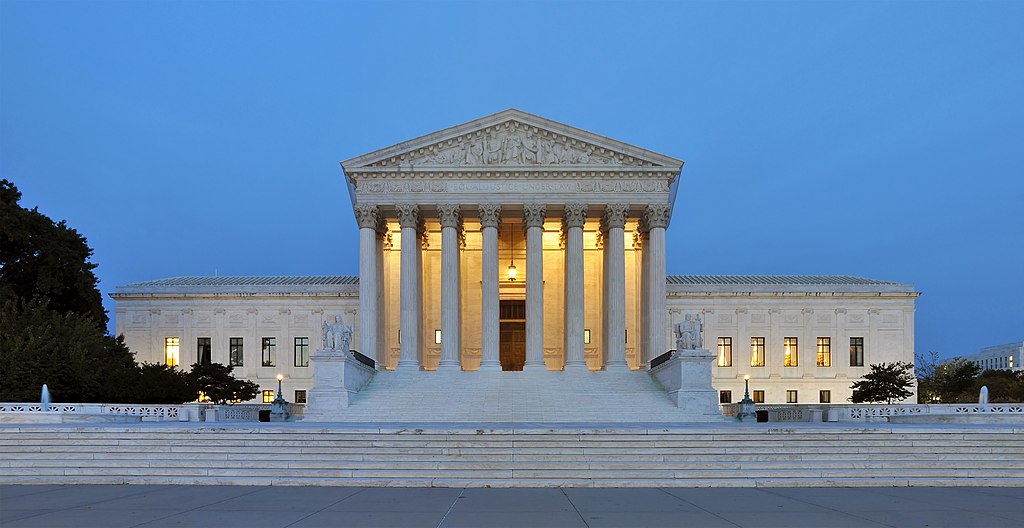How the U.S. Government Built the Largest System of Prior Restraint in U.S. History
The limited and informal system in place at the time of Snepp metastasized into a massive system restraining the speech of millions.

Published by The Lawfare Institute
in Cooperation With

Editor's Note: This post also appears on Just Security.
Authors’ note: This post draws on an amicus brief we submitted in support of the pending petition for certiorari in Edgar v. Haines. (David Zimmer and Benjamin Hayes of Goodwin Procter drafted and filed the brief on our behalf.)
The U.S. government’s prepublication review system restricts the speech of millions of current and former U.S. government employees—including us. This massive system of prior restraint has evaded serious review because litigants and lower courts have treated the Supreme Court’s decision in Snepp v. United States as if it put to rest the serious First Amendment concerns prepublication review raises. But that understanding of Snepp is wrong. Instead, as we explained in our last post, “Snepp decided the foundational First Amendment issue in a brief footnote in the procedural history section of a shadow docket summary reversal without merits briefing or oral argument, and with other procedural irregularities.”
That Snepp hardly addressed the serious constitutional issues posed by prepublication review is not the only problem. In this post we explain that the system of prepublication review in operation today bears very little resemblance to the system in place at the time the court decided Snepp. Far from simply continuing in the form it existed at the time of the court’s decision, the limited and informal system in place at the time of Snepp metastasized into a massive system restraining the speech of millions. It is long past time for the court to consider whether this transformed system can pass muster under the First Amendment.
Prepublication Review Pre-Snepp
Prepublication review began as an informal process at the CIA and the National Security Agency in the 1950s. CIA prepublication reviews were conducted by the Office of Security in conjunction with the Office of the General Counsel and any other affected agency components. According to a CIA inspector general’s report prepared in 1981 and declassified in 2003, that informal process “proved generally adequate throughout those years as few employees, current or former, were engaged in writing or speaking publicly on intelligence.”
But in the 1970s, former and active CIA officers began speaking and writing publicly more frequently, due in part to a cultural shift toward transparency and accountability arising from the Vietnam War, the Church and Pike committees, and the Watergate scandal. In 1976, in response to the increased volume of nonofficial public writings in need of review, the CIA established a Publications Review Board (PRB) to review the nonofficial writings of current employees. The agency expanded the PRB’s responsibilities to include reviewing writings of former agency employees in 1977. Even then, the number of writings under review was modest. In 1979, the year Snepp petitioned for certiorari, there were 47 submissions to the PRB by current employees and 47 by former employees.
Snepp Enables the Largest System of Prior Restraint in U.S. History
Even though the federal government secured a sweeping victory in Snepp, the footnote brushing aside the First Amendment challenge initially provoked concern, not celebration, at the Justice Department. The attorney general described it as having given the federal government “an extremely dangerous power,” and he put in place guidelines limiting enforcement of prepublication review requirements. But this admirable restraint was short lived. President Reagan entered office in 1981, and his attorney general revoked the guidelines issued by his predecessor.
Concerned about the threat of leaks, Reagan ordered the creation of a special interagency task force, headed by then-Deputy Assistant Attorney General Richard K. Willard, to formulate recommendations on how to curb unauthorized disclosures of sensitive and classified information. The task force issued a report (known as the “Willard report”) that noted the extraordinary and increasing frequency of leaks and the inadequacy of criminal prosecutions and current security procedures for discouraging unauthorized leaks. Among other remedies, the report recommended expanded use of prepublication review programs for anyone with access to the most sensitive kinds of classified information.
In March 1983, Reagan issued National Security Decision Directive 84 (NSDD-84). NSDD-84 required “[e]ach agency of the Executive Branch that originates or handles classified information” to “adopt internal procedures to safeguard against unlawful disclosures of classified information.” Among other procedures, it required “[a]ll persons” with access to “Sensitive Compartmented Information [SCI] ... to sign a nondisclosure agreement,” which had to “include a provision for prepublication review to assure deletion of SCI and other classified information.” The Justice Department issued a regulation to implement NSDD-84 making clear that the requirements extended during “or subsequent to” employment and covered not just “books” but “all other forms of written materials” as well. It explained in the regulation that the obligation “to comply with agreements requiring pre-publication review” had “been upheld by the Supreme Court [in Snepp].” The department also released a standard SCI Nondisclosure Agreement, to encourage uniformity across the federal agencies in implementing the directive.
NSDD-84 had its intended effect—it led to a rapid and massive expansion of prepublication review across the federal government. By 1984, according to the General Accounting Office, 23 agencies required some form of prepublication review. The Department of Defense alone estimated that 156,000 military and civilian employees had signed nondisclosure agreements, including “about 45,000” former employees and employees assigned to duties not requiring SCI access. Indeed, 12 agencies subjected employees and former employees to prepublication review regardless of whether they had SCI access.
Congress became alarmed by this massive expansion of secrecy and held a series of hearings. Sen. Charles McCurdy Mathias Jr. of Maryland raised concerns that it would create “a system which would allow the officials of one Administration to censor the writings of their predecessors.” At a hearing on the directive, he disparaged the prepublication process as “that very prior restraint to which the framers of the Constitution were so hostile,” because it required what amounted to “a virtual vow of silence on some of the crucial issues facing our nation.” A House report likewise found that the “prepublication review agreements require the creation of a large bureaucracy to censor the writings and speeches of former Government employees.” It concluded that “[a]s with any government censorship of political speech, the potential for political abuse is great” and that the prepublication requirement “pose[d] a serious threat to freedom of speech and national debate.” Members of Congress were not the only ones to worry about the effect of the new directive. Conservative columnist William Safire predicted that the directive would “force all outgoing officeholders to plead with their replacements to allow the publication of memoirs or informed criticism of the new administration’s policies.”
Congress debated the best way to reverse the policies in NSDD-84. It began by amending the Department of State Authorization Act to delay that agency’s implementation of NSDD-84 by six months as applied to former employees. And in January 1984, members introduced the Federal Polygraph Limitation and Anti-Censorship Act to prohibit prepublication review required by NSDD-84.
Seeing the writing on the wall, the Reagan administration suspended NSDD-84 in February 1984. Willard, who had helped craft the directive, had argued instead for limiting its scope—requiring prepublication review for a specified period of 10 or 15 years, rather than forever. But he was overruled. The administration worried that, if it did not stand down, “it would be forced to deal with a solution provided by Congress.”
As hoped, the decision to suspend NSDD-84 took the wind out of the sails of reform. Yet the suspension of NSDD-84 was not the victory for the First Amendment that it seemed. Yes, agencies were no longer under a uniform directive to implement prepublication review rules. But rescinding NSDD-84 did not void the existing prepublication review provisions in the nondisclosure agreements already signed by tens of thousands of federal employees. And while agencies were no longer mandated to require prepublication review, they were permitted to do so.
If anything, the repeal of NSDD-84 led to a more expansive and confusing landscape of prior restraint regimes. Without a policy covering the entire executive branch, each federal agency developed its own prepublication review process. Each one developed its own office, with its own nondisclosure forms, and its own rules regarding what had to be submitted for review.
Prepublication Review Today
That brings us to today. The current system of prepublication review bears no resemblance to the system the court ostensibly upheld in Snepp.
First, the system reviewed in Snepp applied to a small number of employees in the CIA and the National Security Agency. Today, at least 17 separate prepublication review systems are operating in the federal bureaucracy, requiring lifetime prepublication review for millions of current and former government employees. Indeed, more than 5 million federal employees and contractors are subject to prepublication review. That number does not include the millions of former employees, including us, who no longer have active clearances but have obligations to submit materials to prepublication review for life.
Second, Snepp involved one set of rules applied to employees of one agency—the CIA. Today’s system of prepublication review applies differently across a wide range of agencies—and each has its own rules regarding what must be reviewed. Far from one system, it is many.
Third, the system reviewed in Snepp called on the PRB to work under a 30-day deadline in reviewing submitted manuscripts. Today, manuscripts can linger in prepublication review for months and even years.
In short, today’s system of prepublication review bears little resemblance to the system considered by the court in Snepp. As we will explain in our next post, the court should take the rare opportunity presented to it by the petition for certiorari in Edgar v. Haines to consider whether the largest system of prior restraint on speech in the history of the United States should be insulated from review merely because of a footnote in a case that was never briefed or argued on the merits.






